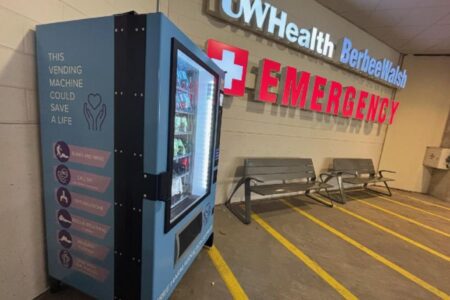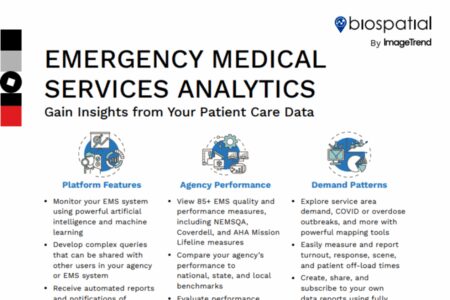EMS agencies are often called on to assist unhoused individuals, whose numbers are growing after years of decline. Unhoused individuals face unique healthcare challenges, such as a higher prevalence of mental health and substance use disorders. Limited access to care for these issues, along with difficulty accessing primary care, has contributed to an increase in emergency department visits among the unhoused population.
EMS agencies are forced to fill gaps in healthcare services due to a lack of utilization or access to alternative healthcare services for this population, leading to stretched resources, higher costs, and negative patient outcomes.
Examining patterns and trends in EMS calls involving unhoused individuals can help communities uncover critical gaps in public health offerings. By designing programs that proactively address issues like basic primary care, mental illness, substance use disorders, and other challenges facing this vulnerable population, communities can reduce the number of incidents that call for emergency intervention. These programs can also improve the health and well-being of unhoused individuals while minimizing the high costs associated with crisis treatment.
EMS Data Insights
ImageTrend recently completed a study comparing patterns of EMS usage among unhoused and housed individuals. Researchers analyzed 4.4 million EMS incidents, of which 1.5% met inclusion criteria and involved unhoused patients. It is important to note that only EMS agencies utilizing an optional field documenting unhoused patients were included in this study.
Among the key findings:
- Demographics: Individuals were more likely to be male (71.2%), non-white (45.6%), and younger than the average (a median age of 46 vs. 57).
- Incident locations: The vast majority of incidents (98.8%) occurred in urban areas.
- Outcome: 79.6% of incidents resulted in transportation.
- Seasonality and timing: Incidents involving unhoused patients were higher during the summer (27.9% vs. 25.8%) and during the evening and overnight hours (47.5% vs. 39.5%).
- Provider primary impressions: Unhoused individuals were more likely to be assessed for pain (8.4% vs. 4.9%), alcohol-related issues (6.9% vs. 1.5%), and mental disorders (6.2% vs 1.9%).
Implications for EMS Providers
These findings provide an opportunity for EMS providers and public health agencies to identify potential solutions for earlier intervention and treatment. Programs could include:
- Mobile community health teams: Outreach programs can provide access to basic healthcare services like screenings, vaccinations, and wound care, as well as support for mental health and substance use issues. These teams also allow providers to monitor and assess individuals’ health status, enabling intervention before problems escalate into emergencies. Tools like Community Health can support case management by documenting encounters and facilitating access to patient data.
- Non-emergency transportation services: EMS agencies can partner with public health services to provide transport to clinics, shelters, and other non-emergency facilities, reducing strain on EMS resources.
- Infrastructure for health and hygiene: Tracking the location of incidents involving unhoused populations can help EMS and public health teams pinpoint where resources like portable toilets and hand-washing stations can provide better sanitation, preventing the spread of infection and disease.
- Community paramedicine programs: Without access to regular care and treatment, chronic and minor conditions among unhoused individuals can worsen rapidly, often leading to emergency calls. Community paramedicine programs can offer follow-up care for these individuals and monitor medication compliance. Research has shown that these programs can reduce emergency room visits and overall medical costs for the community.
In addition, technology solutions can provide insights that help EMS agencies prepare for calls involving unhoused populations. Continuum uses EMS data to pinpoint peak service times, common locations, and reasons for calls related to unhoused individuals, informing everything from scheduling to supply planning.
Support Unhoused Populations in Your Community
Using these insights can decrease reliance on EMS for incidents involving unhoused individuals, improve the allocation of community and EMS resources, and support better health outcomes for this vulnerable population.
ImageTrend Collaborate aggregates de-identified data from a wide range of sources, enabling insights across diverse scenarios and audience segments. This study on emergency services usage by unhoused individuals is just one example of how it can help EMS providers identify trends and patterns to inform proactive community health strategies.
Access to this data also ensures that projects and initiatives align with community needs and address critical gaps.
Explore how our data-driven solutions can support your agency in addressing the needs of unhoused populations. Reach out to learn more.




